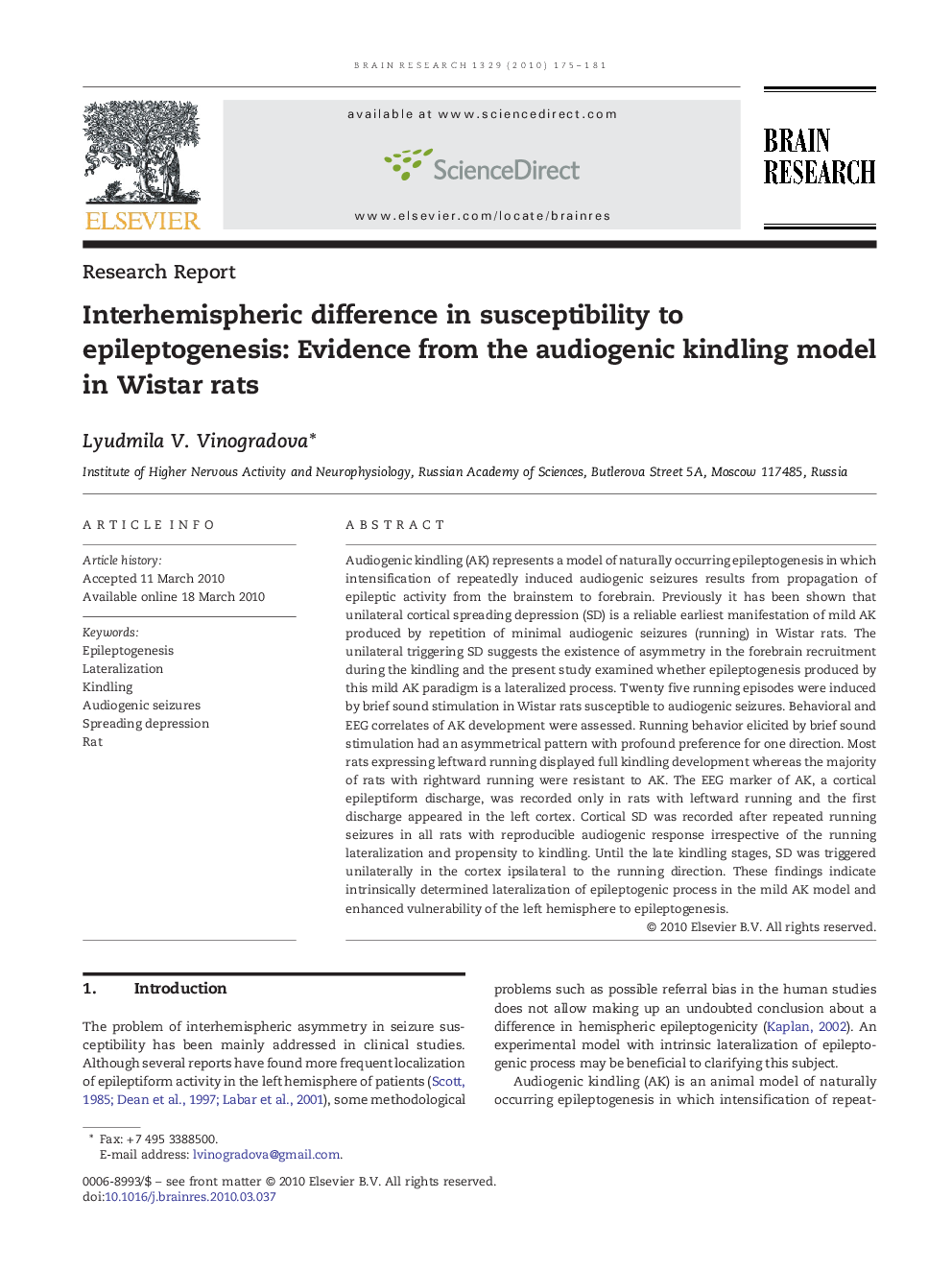| Article ID | Journal | Published Year | Pages | File Type |
|---|---|---|---|---|
| 4327106 | Brain Research | 2010 | 7 Pages |
Abstract
Audiogenic kindling (AK) represents a model of naturally occurring epileptogenesis in which intensification of repeatedly induced audiogenic seizures results from propagation of epileptic activity from the brainstem to forebrain. Previously it has been shown that unilateral cortical spreading depression (SD) is a reliable earliest manifestation of mild AK produced by repetition of minimal audiogenic seizures (running) in Wistar rats. The unilateral triggering SD suggests the existence of asymmetry in the forebrain recruitment during the kindling and the present study examined whether epileptogenesis produced by this mild AK paradigm is a lateralized process. Twenty five running episodes were induced by brief sound stimulation in Wistar rats susceptible to audiogenic seizures. Behavioral and EEG correlates of AK development were assessed. Running behavior elicited by brief sound stimulation had an asymmetrical pattern with profound preference for one direction. Most rats expressing leftward running displayed full kindling development whereas the majority of rats with rightward running were resistant to AK. The EEG marker of AK, a cortical epileptiform discharge, was recorded only in rats with leftward running and the first discharge appeared in the left cortex. Cortical SD was recorded after repeated running seizures in all rats with reproducible audiogenic response irrespective of the running lateralization and propensity to kindling. Until the late kindling stages, SD was triggered unilaterally in the cortex ipsilateral to the running direction. These findings indicate intrinsically determined lateralization of epileptogenic process in the mild AK model and enhanced vulnerability of the left hemisphere to epileptogenesis.
Related Topics
Life Sciences
Neuroscience
Neuroscience (General)
Authors
Lyudmila V. Vinogradova,
